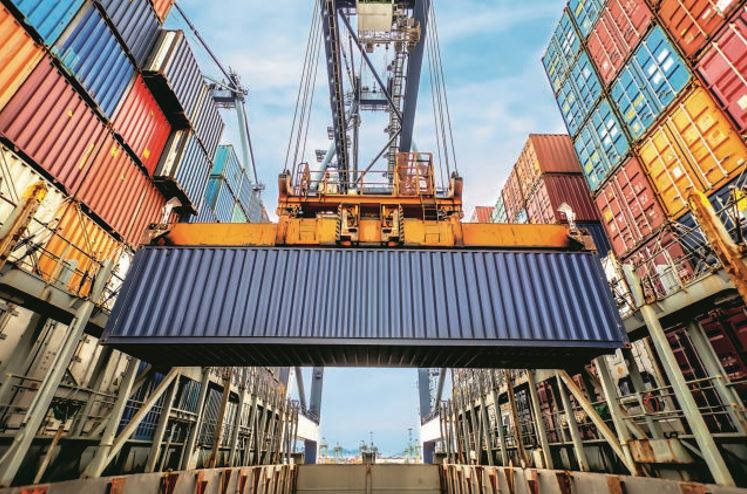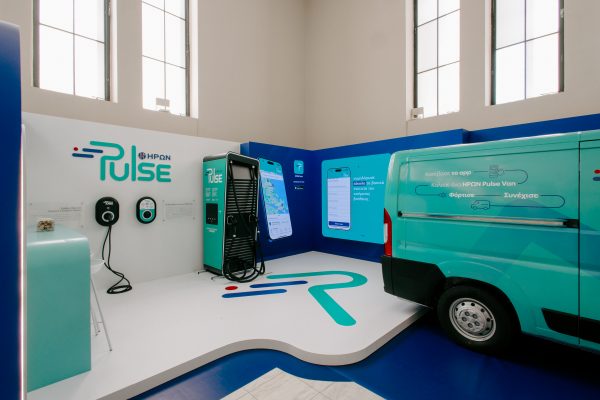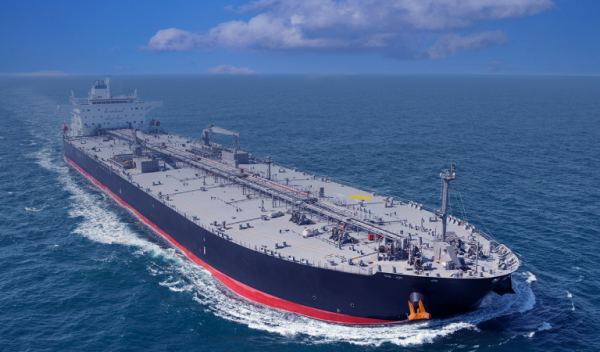
It is a ‘box’ that would soon change the history of shipping. The well-known containers, which are loaded by the thousands on ships and carry from pins to vehicles from one side of the Earth to the other, have a birthday this year as they complete 65 years of life.
It was in December 1956 when American businessman Malcolm McLean, a specialist in maritime shipping and logistics, officially got the patent for the container as he had perceived it (‘intermodal shipping container’ is its official title). It is a standard container designed and constructed for the transport of goods so that it can be used in different modes of transport –from a ship to a train or a truck– without unloading and reloading the cargo in it.
Resource savings, cost savings
These containers exist in many types and standard sizes, but the vast majority are the so-called “dry cargo” or “general purpose” containers. They are 8 ft (or 2.44 m) wide and either 20 or 40 ft (6,10 or 12,19 m) long, as defined by a specific standard set by the International Organisation of Standardisation. Their height is 8 feet and 6 inches (2.59 meters) and is referred to as 20 TEU (twenty-foot equivalent unit) or 40 FEU (forty-foot equivalent unit).
McLean’s invention would revolutionize transportation and international trade from the second half of the 20th century onwards because it created certain patterns in transportation.
The standard container led to immense savings in freight transport, eliminating the need for multiple packaging in different types of cargo, while saving costs by reducing the overall time of such transport. The containers also improved the cargo’s reliability and security. Today, there are approximately 17 million containers in use worldwide, as reported by Supplychaindigital.com. The same figures show that the number of containers circulating at any given time in the sea is about 5 million.
In 1956 the world was still recovering from World War II and it was the war that had shown to countries the potential of logistics. This made McLean realise that trade could become more international in scope. His experience was in land transport and not sea transport. But in his eagerness to expand into new territories, he acquired two World War II tankers and created the Sea-Land Shipping Company. These tankers turned into the first container ships in the world.
Maiden voyage in April 1956
The maiden container voyage was in April 1956, when the ‘SS Ideal X’ vessel carried 58 containers from New Jersey to Texas. Although this first container transfer would revolutionise maritime shipping, the prevalence of the practice took another decade. As economies continued to recover from the war, countries were concerned about the infrastructure investments required if ports, roads and railways were to face huge volumes of container traffic. Supplychaindigital.com also reports that the unions were concerned about job losses among dock workers and strikes took place in ports around the world. In the intervening years, McLean’s design was modified and improved. In 1968, following an agreement between European and US railways, transport companies, and international shipping companies, the ISO 668 standard was introduced, and this determines the dimensions of containers currently used worldwide.
The size of vessels has tripled
Following the invention of the container, the shipping industry focused on achieving economies of scale. Thus, a continued increase in the capacity of container ships is observed. The size of container ships has grown exponentially over the last 50 years. Vessels have almost tripled in size, while tonnage has increased from approximately 1,500 TEUs in 1970 to more than 24,000 TEUs today. In contrast, the crew has been reduced by about a quarter. Today, 12% of global capacity is served by vessels that can carry between 18,000 and 24,000 TEUs, totalling 147 (March figures), while the most popular figure appears to be that of 7,500–9,999 TEUs, which make up 17% of global capacity. The vast size of some container ships was questioned repeatedly during the six days of blocking of the Suez Canal in March last year, as some saw it as a bad omen for very large ships, since it jeopardised the reliability of the supply chain, excellence in navigation, and safety. However, no major changes are expected in this sector as the strategy of the shipping industry, and in particular of liner shipping companies, is to achieve economies of scale. So far, the largest container ship in the world is the 24,004 TEU ‘Ever Alot’, the construction of which was completed in 2022 in China’s Hudong Zhonghua Shipbuilding dockyard, and which also belongs to Evergreen Line, which owns the second largest container ship in the world, the 23.992 TEU ‘Ever Ace’ that was launched in the summer of 2021.
Latest News

Economist: Greece Included in the Best Performing Economies in 2024
Meanwhile, Northern European countries disappoint, with sluggish performances from the United Kingdom and Germany.

EasyJet Expands Its Routes from Athens
The airline’s two new routes will be to London Luton and Alicante and they will commence in summer 2025.

Capital Link Forum Highlights Greece’s Economic Resurgence; Honors BoG Gov Stournaras
Capital Link Hellenic Leadership Award recipient, Bank of Greece Gov. Yannis Stournaras, an ex-FinMin, was lauded for his pivotal role during Greece’s economic recovery

Tourist Spending in Greece Up by 14%, Visa Card Analysis Shows
Greece’s capital Athens emerged as the most popular destination, recording a 17% increase in transactions with Visa cards, surpassing even the cosmopolitan island of Mykonos.

Inflation in Greece Unchanged at 2.4% in Nov. 2024
The general consumer price index (CPI) posted a 0.4% decrease in November compared to the previous month

2024 Christmas Holidays: Extended Shop Hours Schedule
The 2024 Christmas Holidays extended shop hours schedule commences on Thursday, December 12 and runs until the end of the year.

ELSTAT: Seasonally Adjusted Unemployment Down in October
The number of employed individuals reached 4,284,694, an increase of 67,723 compared to October 2023 (+1.6%) and 22,002 compared to September 2024 (+0.5%).

Greek PM’s Chief Economic Adviser Resigns
In the post on his Facebook page, Patelis did not disclose the reasons that led him to step down.

“Masdar Invests in the people of Greece and in the vision of TERNA ENERGY”
Four messages from the CEO of Masdar, the Arab renewable energy giant, after its acquisition of 70% of TERNA ENERGY

Lloyd’s List Greek Shipping Awards 2024: Honors for leading companies and personalities in the Greek shipping sector
20 awards presented at the 21st annual Lloyd's List Greek Shipping Awards










































 Αριθμός Πιστοποίησης Μ.Η.Τ.232433
Αριθμός Πιστοποίησης Μ.Η.Τ.232433